Top Trending Lifestyle News & Highlights


How to remedy the five typical foods that may prevent your body from absorbing vitamin D
Immune system performance, bone health, and general well-being all depend on getting adequate vitamin D. While sunshine exposure and supplements might assist, many everyday meals may actually interfere with your body’s absorption of this vital mineral. Understanding these relationships can make a substantial difference in maintaining optimal vitamin D levels. Even a diet high in vitamin D or appropriate supplementation may not be as beneficial if we eat foods that prevent the absorption of the nutrient. Many people are unaware that their intake of vitamin D isn't being properly utilized by their body because of factors like fat content, specific minerals, or compounds in certain meals that can lower its bioavailability.To find out which five frequent foods might hinder the absorption of vitamin D and the mechanism underlying their effects, we consulted with an expert.According to Ashlesha Joshi, a nutritionist and fitness dietitian at Tone 30 Pilates, "some foods can affect how efficiently the body absorbs or uses vitamin D," as reported by indianexpress.com. The most prominent of these are foods that include phytates, like whole grains and legumes, which can bind to minerals and vitamin D and hinder absorption. Caffeine from tea or coffee in excess can also cause problems by lowering the expression of vitamin D receptors in the intestines. Regular alcohol consumption damages liver function, which is necessary for the conversion of vitamin D into its active form. Trans fats and hydrogenated oils included in processed foods might hinder the absorption of fat-soluble vitamins, such as vitamin D. Finally, because vitamin D is fat-soluble and needs dietary lipids for effective uptake, particularly high-fibre diets, while generally healthy, might occasionally limit absorption efficiency.According to Joshi, "since vitamin D is fat-soluble, combining it with good fats can greatly enhance absorption." For example, eating foods high in vitamin D, such as salmon, eggs, or fortified cereals, together with foods high in healthy fats, like avocado, olive oil, or almonds, can improve absorption. Consuming foods high in vitamin K2, such as fermented soy or cheese, also aids in calcium metabolism and complements vitamin D. She adds that timing is also important, saying that consuming vitamin D-fortified meals or pills after your main meal of the day, when fat intake is highest, helps maximize absorption. Regular exposure to the sun, even for a short while each day, naturally raises vitamin D levels even more.
Published 21 Oct 2025 08:17 PM


Try these pain-relieving at-home back exercises on World Spine Day.
Back pain is one of the most prevalent health issues in today's world, impacting professionals, homemakers, students, and even young children. The main causes of back discomfort include poor posture, extended sitting, and irregular activity. However, with the right workouts and proper posture, coupled with a few easy adjustments to our everyday routines, back discomfort can be greatly decreased. Maintaining normal alignment of the bones and joints, preventing weariness, and lessening the load on muscles and ligaments are all made possible by good posture. Conversely, bad posture can cause stiffness and muscle imbalances, which can ultimately lead to persistent back discomfort. Improving posture is important for maintaining spinal health for many years to come, according to Dr. Ranjith Unnikrishnan, Consultant-Orthopaedic Spine Surgeon, KIMSHEALTH Trivandrum. The health of your posture and spine are extremely important to your body. If left untreated, back discomfort can impair general quality of life, limit mobility, and lower productivity. Most people may avoid or lessen back pain without medicine if they are attentive, disciplined, and follow easy corrective measures, he said.
Published 16 Oct 2025 05:22 PM
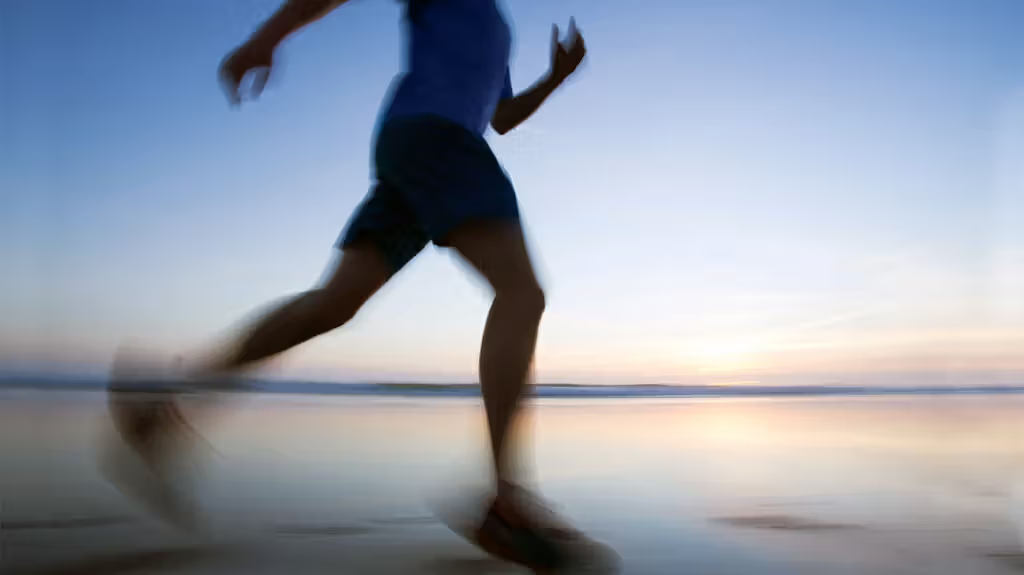

Reversing prediabetes without losing weight: How dietary modifications, fat distribution, and glucose management reduce the risk of diabetes by 70%
More than one in three persons in the US have prediabetes, which is characterized by high blood sugar levels that are not yet high enough to be diagnosed as diabetes. About 70% of people with prediabetes may develop type 2 diabetes if their condition is not controlled, which raises their risk of consequences like kidney damage, neurological issues, and heart disease. Reversing prediabetes has typically involved losing weight with medication, diet, or exercise. Recent studies, however, suggest a paradigm shift: enhancing insulin sensitivity and glucose management might be more important than simply losing weight. Lifestyle changes that focus on food, exercise, and fat distribution can result in remission and significantly reduce the long-term risk of type 2 diabetes.According to a recent study by German researchers at University Hospital Tübingen that was published in Nature Medicine, prediabetes can be corrected without weight loss. After a year of lifestyle changes, participants who were able to achieve normal blood glucose regulation but did not lose a considerable amount of weight had a 70% lower chance of acquiring type 2 diabetes over the course of five years than those who were unable to achieve remission. Whole grains, fruits, non-starchy vegetables, and legumes are good sources of carbs, whereas meals high in healthy fats include fatty fish, seeds, nuts, and olive oil. Normalizing blood glucose levels also requires controlling stress and getting enough sleep.In the US, prediabetes, characterized by high blood sugar that is not yet diagnosed as diabetes, affects more than one in three persons. In addition to concerns like heart disease, renal issues, and nerve damage, type 2 diabetes eventually develops in about 70% of people with prediabetes if left untreated. Reversing prediabetes has typically involved losing weight with medication, diet, or exercise.A recent study that was published in Nature Medicine indicates that prediabetes can be corrected without weight loss, according to a Morning News Today story. After a year of lifestyle interventions, participants who did not lose weight but achieved normal blood glucose regulation had a 70% lower risk of type 2 diabetes over the next five years than those who did not achieve remission, according to research from the University Hospital Tübingen in Germany."A lifestyle intervention can bring prediabetes into remission, meaning back to normal glucose values, even without weight loss, and this remission cuts future type 2 diabetes risk by approximately 70% over up to 10 years," co-author Dr. Andreas Birkenfeld told Medical News Today.
Published 14 Oct 2025 05:21 PM


Which of the three magnificent cats would most likely prevail in a fight involving tigers, leopards, and lions?
Big cats, from the sprawling African savannahs to the center of deep Asian jungles, captivate our collective imagination, especially when they are included in fictitious fights. In a conflict between a tiger, a leopard, or a lion, who would win? Let's examine the information.When it comes to sheer muscle and mass, tigers have the advantage. The largest of the great cats, male tigers can weigh up to 600 pounds or more. Although they usually weigh a little less, lions' stocky bodies nevertheless contain a lot of strength. Further investigation reveals that adult male tigers weigh 400–670 pounds, while male lions weigh 331–550 pounds. These parameters are validated by first-hand reports from animal observers: Even the greatest African lions are frequently greatly outnumbered by Bengal and Siberian tigers.Instead of speculating about who would prevail in a battle, we would much rather people focus their mental energies on preserving these amazing kitties. But because it's a frequently asked question, let's get started. The quick answer is that it depends on a variety of characteristics, including temperament, age, and size. Nonetheless, tigers typically have the upper hand. Tigers have an advantage in warfare since they are not only typically larger but also better at fighting when standing on their hind legs. Although there is much disagreement over the efficacy of this, some think that a lion's mane may offer some neck protection. When tigers and lions faced up in the Roman Coliseum, according to ancient legend, the tigers typically prevailed. Fortunately, though, those savage days are long gone.The likelihood of a tiger and lion encountering in the wild is nearly nonexistent nowadays. Lions are primarily located in Africa, with a small population surviving in a small area of India, whereas tigers traverse Asia. A tight affinity between these two species was shown at Big Cat Rescue between Cameron, a male lion, and Zabu, a white tiger. They were saved from a breeding environment that aimed to create ligers, a hybrid that we most definitely do not support. Although their humorous exchanges may have seemed like a quarrel, rest assured that it was all in good humor. And just so you know, we like to assume Zabu would have had the advantage.
Published 13 Oct 2025 05:19 PM


Lifestyle
Lifestyle covers a wide range of topics starting from Apparels, outdoor, dining, shoes and many other


How to remedy the five typical foods that may prevent your body from absorbing vitamin D
Immune system performance, bone health, and general well-being all depend on getting adequate vitamin D. While sunshine exposure and supplements might assist, many everyday meals may actually interfere with your body’s absorption of this vital mineral. Understanding these relationships can make a substantial difference in maintaining optimal vitamin D levels. Even a diet high in vitamin D or appropriate supplementation may not be as beneficial if we eat foods that prevent the absorption of the nutrient. Many people are unaware that their intake of vitamin D isn't being properly utilized by their body because of factors like fat content, specific minerals, or compounds in certain meals that can lower its bioavailability.To find out which five frequent foods might hinder the absorption of vitamin D and the mechanism underlying their effects, we consulted with an expert.According to Ashlesha Joshi, a nutritionist and fitness dietitian at Tone 30 Pilates, "some foods can affect how efficiently the body absorbs or uses vitamin D," as reported by indianexpress.com. The most prominent of these are foods that include phytates, like whole grains and legumes, which can bind to minerals and vitamin D and hinder absorption. Caffeine from tea or coffee in excess can also cause problems by lowering the expression of vitamin D receptors in the intestines. Regular alcohol consumption damages liver function, which is necessary for the conversion of vitamin D into its active form. Trans fats and hydrogenated oils included in processed foods might hinder the absorption of fat-soluble vitamins, such as vitamin D. Finally, because vitamin D is fat-soluble and needs dietary lipids for effective uptake, particularly high-fibre diets, while generally healthy, might occasionally limit absorption efficiency.According to Joshi, "since vitamin D is fat-soluble, combining it with good fats can greatly enhance absorption." For example, eating foods high in vitamin D, such as salmon, eggs, or fortified cereals, together with foods high in healthy fats, like avocado, olive oil, or almonds, can improve absorption. Consuming foods high in vitamin K2, such as fermented soy or cheese, also aids in calcium metabolism and complements vitamin D. She adds that timing is also important, saying that consuming vitamin D-fortified meals or pills after your main meal of the day, when fat intake is highest, helps maximize absorption. Regular exposure to the sun, even for a short while each day, naturally raises vitamin D levels even more.


Try these pain-relieving at-home back exercises on World Spine Day.
Back pain is one of the most prevalent health issues in today's world, impacting professionals, homemakers, students, and even young children. The main causes of back discomfort include poor posture, extended sitting, and irregular activity. However, with the right workouts and proper posture, coupled with a few easy adjustments to our everyday routines, back discomfort can be greatly decreased. Maintaining normal alignment of the bones and joints, preventing weariness, and lessening the load on muscles and ligaments are all made possible by good posture. Conversely, bad posture can cause stiffness and muscle imbalances, which can ultimately lead to persistent back discomfort. Improving posture is important for maintaining spinal health for many years to come, according to Dr. Ranjith Unnikrishnan, Consultant-Orthopaedic Spine Surgeon, KIMSHEALTH Trivandrum. The health of your posture and spine are extremely important to your body. If left untreated, back discomfort can impair general quality of life, limit mobility, and lower productivity. Most people may avoid or lessen back pain without medicine if they are attentive, disciplined, and follow easy corrective measures, he said.


Reversing prediabetes without losing weight: How dietary modifications, fat distribution, and glucose management reduce the risk of diabetes by 70%
More than one in three persons in the US have prediabetes, which is characterized by high blood sugar levels that are not yet high enough to be diagnosed as diabetes. About 70% of people with prediabetes may develop type 2 diabetes if their condition is not controlled, which raises their risk of consequences like kidney damage, neurological issues, and heart disease. Reversing prediabetes has typically involved losing weight with medication, diet, or exercise. Recent studies, however, suggest a paradigm shift: enhancing insulin sensitivity and glucose management might be more important than simply losing weight. Lifestyle changes that focus on food, exercise, and fat distribution can result in remission and significantly reduce the long-term risk of type 2 diabetes.According to a recent study by German researchers at University Hospital Tübingen that was published in Nature Medicine, prediabetes can be corrected without weight loss. After a year of lifestyle changes, participants who were able to achieve normal blood glucose regulation but did not lose a considerable amount of weight had a 70% lower chance of acquiring type 2 diabetes over the course of five years than those who were unable to achieve remission. Whole grains, fruits, non-starchy vegetables, and legumes are good sources of carbs, whereas meals high in healthy fats include fatty fish, seeds, nuts, and olive oil. Normalizing blood glucose levels also requires controlling stress and getting enough sleep.In the US, prediabetes, characterized by high blood sugar that is not yet diagnosed as diabetes, affects more than one in three persons. In addition to concerns like heart disease, renal issues, and nerve damage, type 2 diabetes eventually develops in about 70% of people with prediabetes if left untreated. Reversing prediabetes has typically involved losing weight with medication, diet, or exercise.A recent study that was published in Nature Medicine indicates that prediabetes can be corrected without weight loss, according to a Morning News Today story. After a year of lifestyle interventions, participants who did not lose weight but achieved normal blood glucose regulation had a 70% lower risk of type 2 diabetes over the next five years than those who did not achieve remission, according to research from the University Hospital Tübingen in Germany."A lifestyle intervention can bring prediabetes into remission, meaning back to normal glucose values, even without weight loss, and this remission cuts future type 2 diabetes risk by approximately 70% over up to 10 years," co-author Dr. Andreas Birkenfeld told Medical News Today.


Which of the three magnificent cats would most likely prevail in a fight involving tigers, leopards, and lions?
Big cats, from the sprawling African savannahs to the center of deep Asian jungles, captivate our collective imagination, especially when they are included in fictitious fights. In a conflict between a tiger, a leopard, or a lion, who would win? Let's examine the information.When it comes to sheer muscle and mass, tigers have the advantage. The largest of the great cats, male tigers can weigh up to 600 pounds or more. Although they usually weigh a little less, lions' stocky bodies nevertheless contain a lot of strength. Further investigation reveals that adult male tigers weigh 400–670 pounds, while male lions weigh 331–550 pounds. These parameters are validated by first-hand reports from animal observers: Even the greatest African lions are frequently greatly outnumbered by Bengal and Siberian tigers.Instead of speculating about who would prevail in a battle, we would much rather people focus their mental energies on preserving these amazing kitties. But because it's a frequently asked question, let's get started. The quick answer is that it depends on a variety of characteristics, including temperament, age, and size. Nonetheless, tigers typically have the upper hand. Tigers have an advantage in warfare since they are not only typically larger but also better at fighting when standing on their hind legs. Although there is much disagreement over the efficacy of this, some think that a lion's mane may offer some neck protection. When tigers and lions faced up in the Roman Coliseum, according to ancient legend, the tigers typically prevailed. Fortunately, though, those savage days are long gone.The likelihood of a tiger and lion encountering in the wild is nearly nonexistent nowadays. Lions are primarily located in Africa, with a small population surviving in a small area of India, whereas tigers traverse Asia. A tight affinity between these two species was shown at Big Cat Rescue between Cameron, a male lion, and Zabu, a white tiger. They were saved from a breeding environment that aimed to create ligers, a hybrid that we most definitely do not support. Although their humorous exchanges may have seemed like a quarrel, rest assured that it was all in good humor. And just so you know, we like to assume Zabu would have had the advantage.
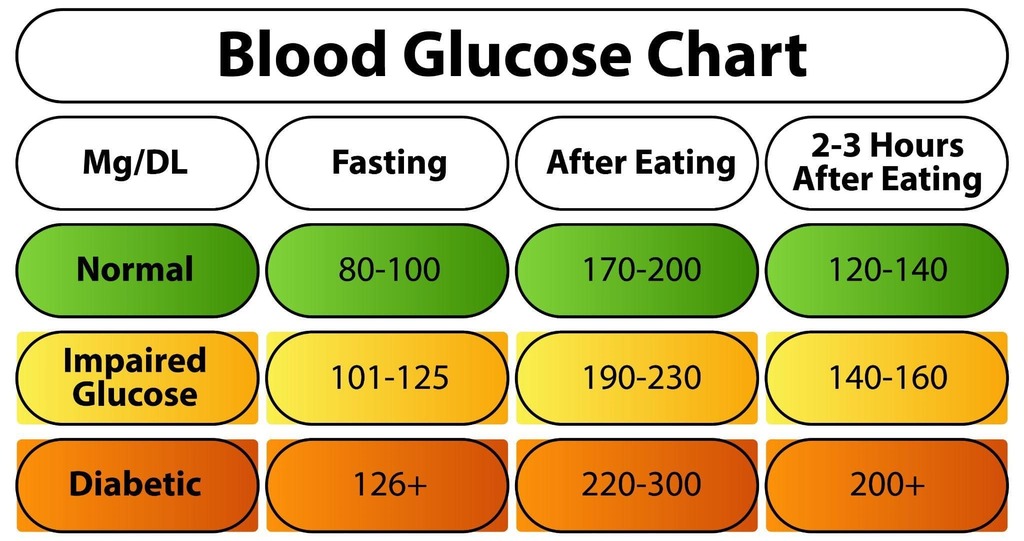

Is it better to check blood sugar immediately after waking up or 1-2 hours after having breakfast?
Many of us have a lot of questions about what the best practices for good health are. We found a relevant question on Quora asking when the right time to check blood sugar is. “Is it better to check your blood sugar immediately after waking up or 1-2 hours post-breakfast?” Therefore, we opted to consult a diabetologist.For those with diabetes, keeping an eye on blood sugar (glucose) levels is crucial for assessing the effectiveness of the current treatment plan. It provides guidance on daily and sometimes even hourly management of your diabetes.When you have diabetes, especially if you're on insulin, it's crucial to monitor your blood sugar levels. Monitoring blood sugar levels can provide insights to guide your choices regarding diet, exercise, and insulin dosage. Your blood sugar can be influenced by a number of factors. With time and practice, you can learn to anticipate some of these impacts, while others are very challenging or impossible to foresee. This is why, if your healthcare provider suggests it, you should regularly monitor your blood sugar levels.As an example, the following scenarios usually elevate blood sugar levels: Taking in carbohydrates. Insufficient use of diabetes medication or insulin, or failing to take a dose. Regular absence of physical activity or receiving less exercise than normal. Using corticosteroid (steroid) medications. Health issues, operations, or strain. Dawn phenomenon (a morning spike in blood sugar levels that is probably caused by natural hormonal changes, including cortisol). Tobacco use. Flüssigkeitsmangel. Adolescence.Blood sugar levels usually drop in the following situations: Omitting meals. Excessive use of diabetes medication or insulin. Exercise. The situations listed below can increase or decrease your blood sugar, depending on your individual biology and other factors: Menstrual periods. Timing of food, medication, and insulin. Consuming drinks with alcohol. Medication interactions not related to diabetes.Because of all these differing variables, it’s crucial to keep an eye on your blood sugar levels if you have diabetes. This is the only method to determine with certainty when your blood sugar levels are fluctuating. And it aids in understanding how to modify your management approach for both you and your healthcare provider.
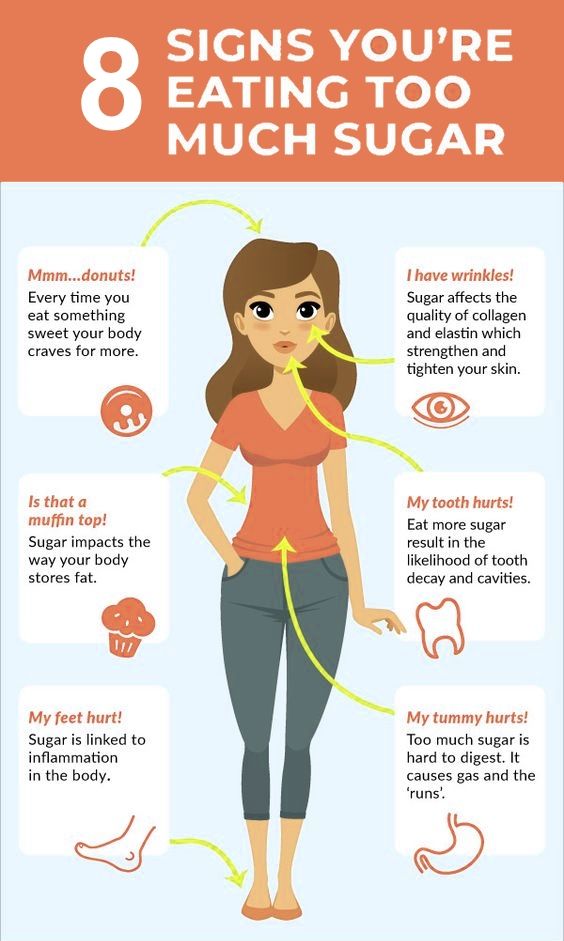

Indications that your body contains too much sugar and solutions
Are restlessness, a sudden urge to urinate, and hormonal instability symptoms of elevated blood sugar? We spoke with specialists who provided detailed explanations in order to gain a deeper understanding of our bodies."Excess sugar may be the cause of energy spikes and crashes if you feel lethargic most of the day. Your body loses more fluids when your blood sugar is high, which results in persistent thirst. According to Dr. Manjusha Agarwal, senior consultant in internal medicine at Gleneagles Hospital in Parel, Mumbai, people who consume excessive amounts of sugar frequently make more trips to the bathroom. The kidneys attempt to eliminate high blood sugar levels through urine.Additionally, sugar can alter the fluid balance in your eyes, leading to transient changes in vision. According to Dr. Agarwal, "too much sugar can damage blood vessels and slow down healing. "Dr. Vijay Negalur, HOD, Diabetic, KIMS Hospitals, Thane, reaffirmed that certain symptoms are real signs that your body is metabolizing more sugar than it should.Insatiable hunger is another sign. Soon after a meal, unexpected spikes and dips in blood sugar can cause you to feel hungry again. Unstable sugar levels can make it difficult to concentrate clearly, which is why some people also feel brain fog or difficulties concentrating. Dark spots, pigmentation, or skin tags, especially around the neck, can potentially be signs of elevated blood sugar levels, according to Dr. Negalur


‘I would respond too quickly to situations’: Anushka Sharma on learning to respond and how it transformed her life and Virat Kohli’s
For a few years, it was the case that I handled situations based on my emotions.I believe I am beginning to learn how to respond instead of react. “That has changed the quality of my life…,” Anushka Sharma said during a promotional event for a sports brand. The actor noted that her thoughtful way of dealing with circumstances and individuals has benefited her husband Virat Kohli as well, saying: “It has changed my life and yours?…” while grinning widely at the cricketer and indicating his rash responses during matches. She went on, “At times, the bowlers aren’t celebrating as much as Virat is…”Her statements mirror a common battle: the human inclination to act on impulse when faced with adversity. During those intense moments, we fail to recognize how irrational our actions are. Dr. Adamina Gupta, a psychologist at the LimbiQ Centre for Psychiatry in Delhi, stated that ultimately we are left with nothing but a profound feeling of regret. “What should be important is finding a way to leave that state behind, training our minds to behave in a better way, and opting to respond with composure instead. She informed indianexpress.com, “Our inclination to act in a particular manner arises from both biology and experience.”


Parineeti Chopra has sampled the hottest chilies on two occasions, confessing that one nearly ‘killed’ her: ‘There is nothing spicy in India’
Parineeti Chopra, expecting her first baby with Raghav Chadha, previously expressed her fondness for spicy food: “Spicy food is tastier than normal. And when folks say that Tabasco is chili, I chuckle at them. Govind, main kitna teekha khaana khaati hun? (Govind, how much spicy food do I eat?)” she inquired of her staff, and he replied, “Bahut” (A lot).She openly admitted on her YouTube channel that she has sampled the hottest chilies “ever eaten in my life” on two occasions, one of which nearly “killed” her. „In Budapest as well as Australia…It cannot be touched with bare hands, so make sure to use gloves. Once it enters the kitchen, you must remove all other food items. They created a chutney variant of it, and I sampled a spoonful with rice. That was the sole chilli on the planet that did me in. In India, there’s nothing spicy (laughs). Everything is delicious. Individuals are losing their minds, perspiring, and weeping…but I’m thinking, ‘what’s up?’ I truly like that!


"Very low percentage of body fat": Vivek Dahiya's toned body "without any gym, bars, or equipment"
Vivek Dahiya shocked his admirers and followers by sharing images of his toned body on social media. He went on to disclose that he used a strategy that allowed him to attain the same results without going to the gym. Would you believe me if I told you that I got this toned body without using a gym, dumbbells, bars, or any other equipment? All I needed was bodyweight exercises, callisthenics, and a ton of discipline and hard work, which helped me reach a very low body fat percentage, he posted on Instagram."Remember that simplicity and consistency are key in a world full of fitness fads," the 40-year-old continued. Go back to the fundamentals and observe how things change. Let's examine how such a metamorphosis might be achieved without going to the gym, taking a hint from the Qayamat Ki Raat actor.From the standpoint of diet and fitness, this is totally feasible with the correct attitude and commitment. Garima Goyal, a fitness trainer and worried consultant nutritionist.The progressive overload approach is used in bodyweight training. Goyal claims that variations such as pistol squats, single-leg squats, push-ups with elevation, and slow eccentric activities gradually test muscles and make them adapt, which promotes growth and definition. Bodyweight exercises, as opposed to isolated machine workouts, work the core and stabilizer muscles in each movement, improving overall balance and functional strength. High-volume or frequent sessions are simpler to complete because no equipment is needed, which helps speed up toning and endurance, Goyal added."While improper form in any workout can lead to injuries, bodyweight progressions usually encourage gradual adaptation, lowering the risk of overload injuries that can occur with excessive weights," Goyal added, emphasizing that there are safety benefits to training without heavy weights. However, this approach works best when accompanied by a healthy diet, particularly enough protein to repair muscles and enough sleep to promote recuperation.


In reality, unicorns exist as well — they are found in the ocean. Monarchs in Europe during the Middle Ages spent vast sums on their horns
If you’ve ever believed that unicorns are purely mythical, reconsider your stance. In the Arctic Ocean resides a creature so extraordinary that it is dubbed the unicorn of the sea. The narwhal, unlike its imaginary counterpart that is bound to land, is a real creature. It’s a kind of whale, and although it may not breathe fire or gallop through the woods, it possesses a long, spiral tusk protruding from its head that has intrigued people for centuries.Hold on… a horned whale? Not exactly a horn. What you see is a tooth—an exceptionally long one, to be precise. This tooth in the majority of male narwhals develops in a twisted, spiral manner straight through the upper lip and can attain a length of up to 10 feet. Some females also develop tusks, although they are typically shorter in length.It is now thought by scientists that it aids narwhals in sensing alterations in their surroundings, including temperature and water pressure. And, just as a peacock's plumage or a lion's mane does, it might assist in attracting partners.During the Middle Ages in Europe, narwhal tusks were frequently marketed as genuine unicorn horns. Royal families invested great sums of money in them, convinced they possessed magical abilities or could identify poison. Meanwhile, these so-called “unicorn horns” were nothing but narwhal teeth from distant, frozen seas.Narwhals inhabit the frigid Arctic regions, particularly around Canada, Greenland, and certain areas of Norway and Russia. These whales favor cold, isolated areas where they can swim beneath thick sea ice and dive to astonishing depths (some have been noted diving over 1,500 meters!). They live most of their lives away from people, and this is why our knowledge about them is still limited. However, it is known that they enjoy cold water, travel in pods, and possess a surprisingly peaceful and quiet nature.


Parmeet Sethi gives Yogita Bihani a health tip: ‘Wann immer ein Salat dabei ist…’
Parmeet Sethi, aged 58, recently offered a health tip to his soon-to-be daughter-in-law, Yogita Bihani, who is engaged to his elder son, Aaryamann Sethi. As Parmeet relishes a breakfast platter at a resort, he is heard saying in one of Aaryamann’s blogs, “Life ka mazza hai. Gazing at a fruit platter, you are suddenly filled with the feeling of wealth. Develop the habit of consuming a pomegranate. Include that and beetroot in your daily diet. Das nicht gegessen, wurde dies verzehrt. “Salad mein hamesha beetroot hona chahiye,” Parmeet, jo aksar workout karte aur healthy khana khate dekhe jate hain, ne Bihani se kaha.Aaryamann Sethi, son of Archana Puran Singh, has recently shared another entertaining vlog on his YouTube channel. This specific video recorded moments with his dear ones, along with a visit to assess the development of his new house with his fiancée, actress Yogita Bihani. One of the vlog’s most memorable moments was when Yogita affectionately touched the feet of her future father-in-law, actor Parmeet Sethi, after he teased the couple about their constant filming, joking that they would even record themselves while sleeping. The family was seen relishing mushroom sliders together at the start of the vlog, after which Yogita and Aaryamann came across Parmeet, who was busy with work. Upon seeing them filming once more, he quipped that their shooting schedule appeared boundless, suggesting that even their nightly snoring could be captured on film. As a reply, Yogita lightheartedly explained that she had learned everything from her elders while bending down to take his blessings. All three laughed at this exchange, which led Parmeet to further the joking by stating that she had also turned mischievous.
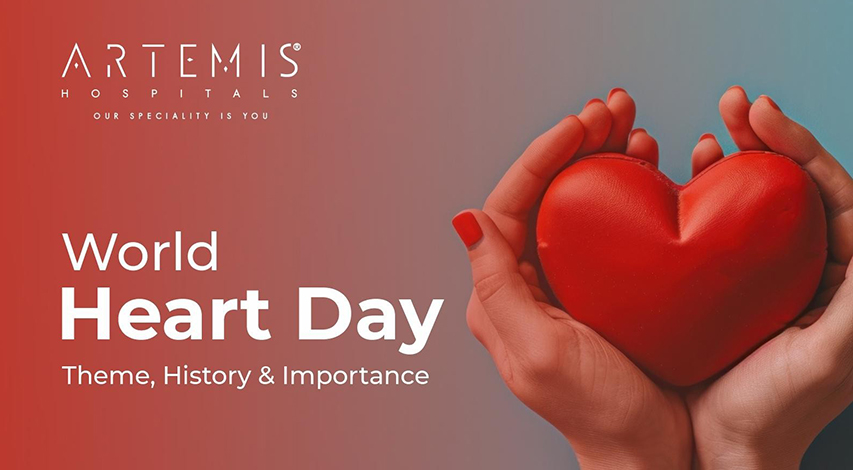

World Heart Day 2025: Top 4 Beneficial and Detrimental Food Categories for Cardiac Health
World Heart Day 2025: In our rapidly moving world, heart disease is becoming more prevalent. Poor lifestyle choices and unhealthy dietary habits rank among the primary causes. Our heart health is being harmed by sitting for extended periods and eating junk food on a regular basis. You can greatly enhance the state of your heart and lower the chances of severe ailments such as heart attacks and hypertension by adopting a healthy, well-balanced diet.Every year on September 29, World Heart Day is celebrated worldwide to promote awareness of cardiovascular health. It is crucial to know which foods promote heart health and which ones should be avoided.Heart Health and Dietary Habits As reported by Harvard Health, a well-balanced diet is essential for heart health. It’s important to consider not only what foods you consume, but also the quantity and frequency of consumption.Your eating habits affect cholesterol levels, blood pressure, and inflammation in the body—factors that are vital to heart health. The American Heart Association (AHA) advises giving precedence to natural, unrefined foods like fruits, vegetables, whole grains, legumes, and healthy fat sources. 4 Types of Nutrition That Promote Cardiovascular Well-Being Fruits & Vegetables: Packed with fibre, antioxidants, and vital vitamins, these foods safeguard blood vessels and help lessen inflammation. In particular, leafy greens are rich in nitrates that assist in controlling blood pressure. Fruits such as berries, bananas, papayas, apples, oranges, and guavas offer particular advantages. Whole Grains: Oats, brown rice, quinoa, and whole wheat bread are rich in fibre and help reduce cholesterol levels. It has been demonstrated that substituting refined grains with whole grains can greatly diminish the risk of heart disease.Healthy Proteins: Although protein is essential, it’s important to restrict sources such as red meat and processed meats because of their detrimental effects on heart health. Choose plant-derived proteins such as lentils, chickpeas, soybeans, and tofu instead. Fish and eggs are also great options, particularly oily fish, which are high in omega-3 fatty acids that help reduce inflammation. Dairy Products with Low Fat Content and Beneficial Fats: Select skimmed or low-fat options for milk, yogurt, and cheese. Substitute saturated fats such as butter and ghee with heart-healthy oils like olive oil, mustard oil, or sunflower oil. Nuts, seeds, and avocados are also sources of healthy monounsaturated fats that can reduce the risk of heart disease.


Parenting is not exclusive to humans; here are 8 animals that stay with their young after giving birth.
Whether it’s elephants or spiders, certain species do more than is expected to safeguard, instruct, and remain near their young. We will examine a small number of animals recognized for being genuinely dedicated parents.In the animal kingdom, some parents do not abandon their offspring after birth. Indeed, numerous animals exhibit a remarkable degree of love and care, much like human parents do. Whether it’s elephants or spiders, certain species do more than is expected to safeguard, instruct, and remain near their young. We will examine a small number of animals recognized for being genuinely dedicated parents.Species such as elephants, orcas, orangutans, wolves, and emperor penguins demonstrate that parenting is not limited to humans, providing significant parental care. Various other creatures, including alligators, dolphins, and even certain insects and spiders, also commit to the upbringing of their offspring.1) Elephants Mit einer Tragzeit von 22 Monaten haben Elefanten die längste bekannte Tragzeit. Calves, which are born blind, rely on their mothers for care. Upon the birth of a new calf, the herd comes together and gently touches the calf with their trunks. Calves are sometimes raised and cared for communally, a phenomenon known as ‘alloparenting’.2) Orang-Utans In the initial months of their lives, baby orangutans maintain constant contact with their mothers and are carried on her belly as she moves around. The couple will also share a nest for sleeping. While infants usually remain with their mothers for a few years, female orangutans have been observed to ‘visit’ their mothers until they are about 15.3) Orcas Nach der Geburt unterstützt die Mutter ihr Junges dabei, zur Oberfläche zu schwimmen, um den ersten Atemzug zu nehmen. Infants are inclined to remain in close proximity to their mothers, conserving energy by swimming in her slipstream. Unlike other species, female orcas spend their entire lives with their mothers, moving in matrilineal groups. Orcas can live up to 90 years, which means that multiple generations travel together.4) Wolf spiders Wolf spiders are the designated experts in carrying their young, transporting up to 100 babies on their backs to shield them from predators. People attempting to swat at the mother have filmed this phenomenon multiple times, only to be interrupted by hundreds of swarming infants. Maybe a discreet hint to keep hands off?5) Penguins The best tag-team relay-race award goes to the penguins. Once an egg has been laid, the fathers keep it warm and secure by balancing it on their feet and tucking it under a flap of skin known as a ‘brood pouch’. In the meantime, the mother journeys to the ocean for some legendary feasting. She comes back exactly when the egg hatches. At this moment, she feeds the chick through regurgitation and instructs the father to head to the sea for his first meal in about 100 days.6) Mouthbrooding fish Numerous fish species are mouthbrooders, meaning they safeguard their eggs by holding them in their mouths. To reduce the risk of swallowing their own eggs, mothers do not consume any food during this time. Once the eggs hatch, the fish swim out, creating incredible photo opportunities. Young fish of certain species continue to seek refuge in their mothers' mouths after hatching.7) Strawberry poison-dart frog In addition to all the other challenges, this incredible parent must manage the possibility that their offspring will attempt to eat one another. To avert this occurrence, mother frogs carry each tadpole separately on her back to a secure water pool, which is frequently located at the center of a flower. She subsequently spends around 50 days at each nursery pool to provide nourishment for the tadpole. Meanwhile, the father frogs act as sentinels to prevent competitors from discovering their offspring.8) Cattle Cows immediately establish strong connections with their calves. Immediately after giving birth, the mother will clean her calf by licking and nuzzling it while making a distinctive sound that motivates the calf to rise and nurse.


‘It’s not as safe as it was for us’: Madhu Chopra, Priyanka Chopra’s mother, discusses the challenge of parents instilling values in their children amid swift societal changes
Parenting has always posed challenges, but the complexities of the digital age have intensified these challenges. Children today contend with a distinctive challenge: amidst the unlimited information from various sources, both trustworthy and not, how do they sift through the noise to concentrate on what is genuinely important?Dr. Madhu Chopra, mother of actress Priyanka Chopra, recently discussed this change, recognizing how different the world is for younger generations. „Die Zeiten ändern sich. Everyone develops. It has to be that way. We lived in different times. Your times vary. For us, it was safer. And, there are many more options. Information is bombarding us from a multitude of sources—some legitimate, some not; some clearly defined, others not. Thus, the children find it quite challenging to separate the noise from what is truly pertinent and necessary. Therefore, I believe it is legitimate for them to discard some of the lessons their parents taught them at this time.


A nutritionist clarifies the importance of timing, cooking methods, and variety when incorporating dals into your diet.
Dals are a staple food on most Indian plates, but not everyone is aware that how you cook and eat them can significantly affect their nutritional impact. In a recent Instagram post, holistic health nutritionist Khushi Chhabra explained, “Dals are a powerhouse of complex carbohydrates, plant protein, fibre, vitamins, and minerals – but did you know that how you cook and eat them makes all the difference?”She proceeded to emphasize several practical details that many neglect regarding dals: the optimal consumption method for each variety to maximize nutrition, the individuals who should include them in their diet and those who might need to steer clear of them, the ideal timing for their consumption, and the advised daily amount. Chhabra provided additional tips for each type of dal, highlighted incorrect consumption methods, and suggested easy techniques to enhance their digestibility and gut compatibility. A nutritionist explains that proper preparation of dal can enhance its health benefits by soaking it to reduce gas-causing compounds and cooking it with spices like ginger and asafoetida to aid digestion. To ensure a complete protein profile, it is beneficial to incorporate a variety of dals with grains, while consuming them in moderation and often pairing them with vegetables can help balance the diet and promote overall health.Soak before cooking: To lessen anti-nutrients such as phytic acid and oligosaccharides, which can lead to gas and hinder protein absorption, dals should be soaked for a few hours. Wash thoroughly: Before soaking, wash the dal 3-4 times to eliminate any impurities. Don't throw away the soaking water: It can be used to cook the dal, keeping its essential nutrients intact
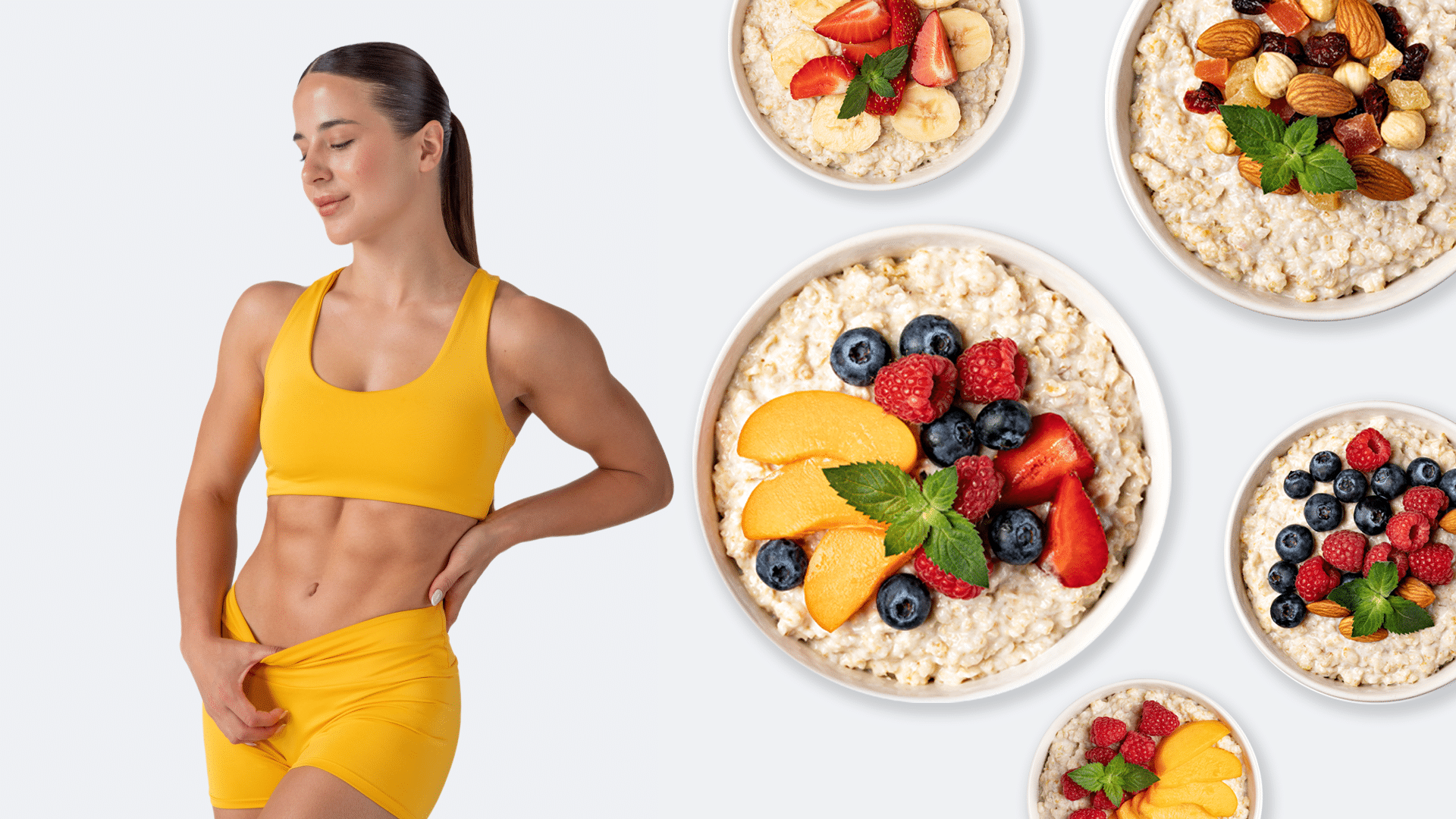

"From assuming all fruits are healthy to avoiding protein: Five typical errors people make when fasting "
Starting too forcefully, overeating within the eating window, skipping hydration, disregarding personal needs, and relying too much on processed foods are five common mistakes made when fasting. To prevent severe pressure or dietary deficiencies, it's critical to choose complete, nutrient-dense foods, including proteins, throughout the eating window and to pay attention to your body's cues.Beginning too violently The Error: The body may get overwhelmed if extended or frequent fasts are initiated without a progressive adaptation. Ways to Prevent: Start with shorter fasting durations (e.g., 12 hours) and increase them gradually as your body gets used to it.Overindulging during the window for eating The Error: Overindulging in processed or unhealthy foods during permitted eating hours in an attempt to "make up" for the fasting period, which defeats the purpose of fasting. Ways to Prevent: To make sure you're still in a calorie deficit overall, concentrate on eating wholesome, whole meals and pay attention to what you eat. Overindulging during the window for eating The Error: Overindulging in processed or unhealthy foods during permitted eating hours in an attempt to "make up" for the fasting period, which defeats the purpose of fasting. Ways to Prevent: To make sure you're still in a calorie deficit overall, concentrate on eating wholesome, whole meals and pay attention to what you eat.Not drinking enough water The Error: Dehydration occurs when people cut back on their meal consumption but neglect to consume enough water or other non-caloric drinks. Ways to Prevent: Water, unsweetened tea, and other calorie-free beverages should be consumed in large quantities throughout the day, particularly when fasting.


There are no shortcuts to health, says Mallika Sherawat, who shares her rigorous exercise regimen to maintain her strength and tone at 48.
When it comes to fitness, Mallika Sherawat is demonstrating that age is nothing more than a number. The actress maintains her muscular and toned body at 48 because of a rigorous exercise regimen that she follows religiously. Mallika's exercise routine, which includes both cardio and weight training, will keep you inspired.Mallika posted a video of herself working out on Instagram on September 17 with the remark, "There are no shortcuts to health, nothing replaces the power of regular exercise and consistency." At the gym, she performs a number of workouts while wearing tights and a black tank top.A variety of strength and cardio workouts that focus on various muscle groups are part of Mallika's training regimen. She begins by cycling, which increases her cardiovascular health, increases her stamina, and prepares her body for more strenuous activities. Leg curls are the next exercise she does, with an emphasis on strengthening her lower body and hamstrings, which are crucial for keeping her legs strong and toned. The rope pull, an upper-body exercise that works her arms, shoulders, and back while also improving her grip strength and endurance, is another essential component of her practice. These workouts work together to create a well-rounded regimen that maintains her energetic, flexible, and fit.Mallika is quite active on Instagram and frequently gives her followers a peek into her wellness and exercise regimens. She was shown relaxing and letting go of the stress from the previous week during an acupuncture and sound healing session in her post from July 28.


Is your face actually sculpted by facial compression bands?
Everything that offers that desired, chiselled look is something we love to try, from facial yoga to gua sha massage and face cupping. Kim Kardashian introduced a seamless sculpt face wrap under her SKIMS brand since she understands how enamored everyone is with sculpted faces.It should come as no surprise that facial compression bands, which promise tighter skin and a sharper jawline, are currently the hottest fad. It's good to consider whether they actually produce effects and, more crucially, whether they are safe to use before hurriedly adding one to your cart. Let's ask the professionals.Elastic wraps applied over the chin and jawline are known as facial compression bands, face-slimming bands, or V-line lifting bands. According to India Today, Dr. Ruben Bhasin Passi, dermatology consultant at CK Birla Hospital in Gurugram, says the goal is to temporarily tighten the skin, support lymphatic drainage, and lessen puffiness by applying continuous pressure. "Some versions claim to train the skin and underlying muscles into a slimmer contour," she continues.If you've been wondering why everyone in your feed is using compression bands to attain that V-shaped, sculpted jawline, it's because they promise to be a quick, non-invasive method that doesn't require fillers or surgery.Dr. Passi claims that the craze for lifted features and sharp jawlines on social media is what's driving the trend. Why is it so attractive? It is simple to apply at home, reasonably priced when compared to cosmetic procedures, and seamlessly integrates into the enduringly popular K-beauty regimens. Furthermore, compression bands are frequently promoted as a quick fix to tighten skin, define the jawline, and minimize puffiness, according to Dr. Shireen Furtado, senior consultant, medical and cosmetic dermatology, Aster CMI Hospital, Bengaluru. "The idea of getting quick results at home makes them attractive, especially for those who do not want cosmetic procedures," she informs us.


















